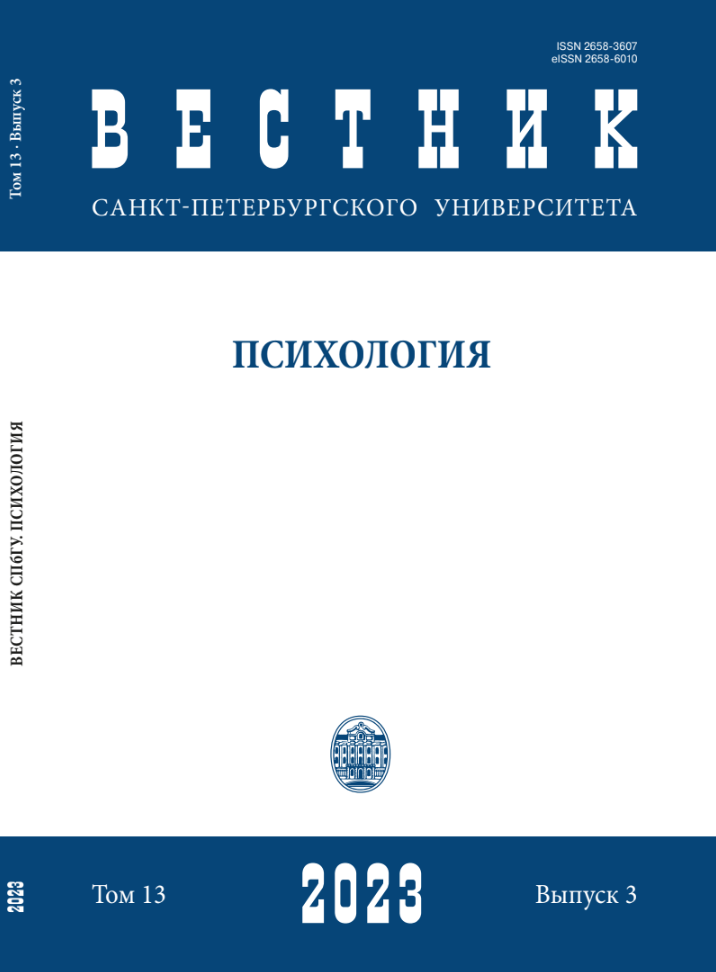Изменение саморепрезентации личности в условиях неконгруэнтности целей и ситуационных возможностей
DOI:
https://doi.org/10.21638/spbu16.2023.306Аннотация
Цель работы — изучение влияния неконгруэнтности целей индивида и возможностей ситуации на саморепрезентацию личности в повседневных ситуациях. В ходе исследования участники (N = 62) сначала оценивали черты своей личности, после чего определяли свои цели относительно ситуаций в шести парах ситуационных виньеток по шкале SAAP (Situational Affordances for Adaptive Problems — Ситуационные возможности для адаптивных проблем), затем выбирали из списка прилагательные, описывающие их состояние в ситуациях конгруэнтных (КС) и неконгруэнтных (НКС) первоначальным целям и определяли валентность саморепрезентации в КС и НКС. Результаты исследования показали, что во всех шести парах сравниваемых ситуаций произошли изменения целей, от полной или частичной замены до существенных изменений их значимости для респондентов. Множественный регрессионный анализ позволил сделать вывод, что ситуационные детерминанты как объясняющие переменные лучше интерпретируют проявления дружелюбия, экстраверсии, добросовестности и открытости в НКС по сравнению с устойчивыми чертами. Однако устойчивые черты лучше объясняют проявления нейротизма в НКС, чем ситуационные характеристики. Результаты исследования подтверждают предположение, что изменившиеся цели вызывают проявление черт и состояний, отличающихся от устойчивых диспозиций. Проведенный количественный анализ прилагательных с положительным и отрицательным эмоционально-оценочным значением показал, что в НКС респонденты в 2,57 раза чаще выбирали атрибуты с отрицательной оценкой по сравнению с КС, что подтверждает гипотезу о преобладании негативной валентности саморепрезентации в условиях целевой неконгруэнтности. Полученные данные показывают, что изменение саморепрезентации в НКС было значимым и теоретически ожидаемым образом связано с изменением целей в результате изменения ситуационных характеристик и возможностей.
Ключевые слова:
саморепрезентация, ситуационные детерминанты, неконгруэнтность целей, черты, состояния
Скачивания
Библиографические ссылки
References
Загрузки
Опубликован
Как цитировать
Выпуск
Раздел
Лицензия
Статьи журнала «Вестник Санкт-Петербургского университета. Психология» находятся в открытом доступе и распространяются в соответствии с условиями Лицензионного Договора с Санкт-Петербургским государственным университетом, который бесплатно предоставляет авторам неограниченное распространение и самостоятельное архивирование.




